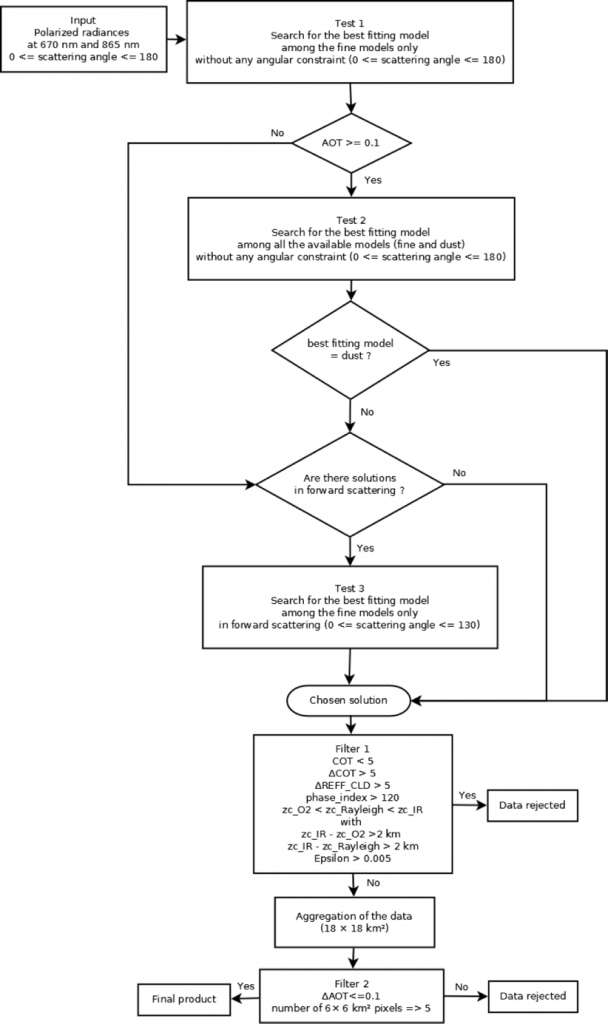-The first algorithm uses only polarization measurements to retrieve the aerosol above clouds properties and is described in the section 2.2.4 of Waquet et al., (2013) : https://amt.copernicus.org/articles/6/991/2013/. This first algorithm provides the “AERO-AC-polarization-18km” product (aerosol optical thickness and Angstrom exponent). This first retrieval step also includes quality filters used to select homogenous cloudy scenes, liquid and optically thick clouds (COT>3), using combined POLDER and MODIS products. MODIS thermal infrared measurements are also used to distinguish between mineral dust layer and cirrus above clouds.

Figure 1 : Schematic view of the operational algorithm used to retrieve the aerosol properties above clouds at a global scale from POLDER polarization data acquired at 0.67 and 0.865 μm and MODIS/POLDER combined cloud products (source : Waquet et al., 2013).
7 aerosol models are considered in the algorithm. 6 fine mode aerosol models (i.e. monomodal lognormal size distribution with geometrical radii varying from 0.06 to 0.16 microns). The complex refractive is equal to 1.47-0.01i. The 7th model is a bimodal non-spherical mineral dust model (see Waquet et al., 2013a for details on this model, see table 5 case 4).
